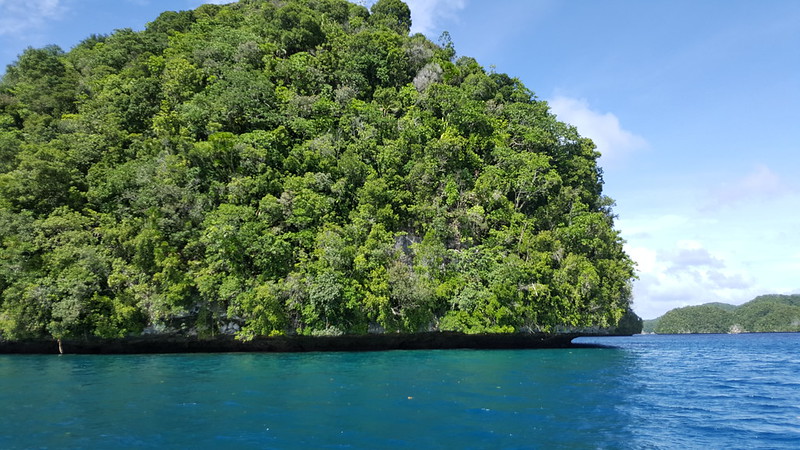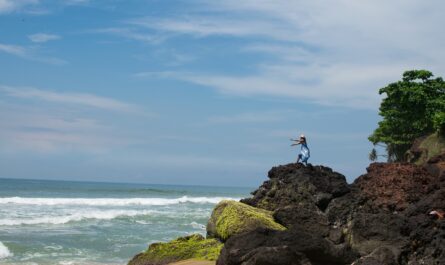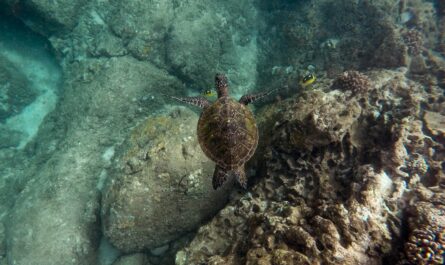The Rock Islands of Palau, situated in the Pacific Ocean, are an archipelago of limestone islets surrounded by turquoise waters and teeming with marine life. Recognized as a UNESCO World Heritage Site in 2012, these islands are renowned not only for their stunning natural beauty but also for their ecological significance and cultural heritage. This extensive article explores the geological formation, biodiversity, cultural history, and the conservation efforts that make the Rock Islands a global eco-tourism treasure.
1. Geological Formation: Ancient Coral Uplifts
The Rock Islands were formed millions of years ago from uplifted coral reefs. These coral formations were gradually eroded by wind and water, giving the islands their distinctive mushroom-like shapes. Over 300 limestone islands, ranging from tiny outcroppings to larger landmasses, make up the archipelago. Most of these islands are uninhabited and covered in lush, tropical vegetation, with sheer rock walls that plunge into the surrounding lagoon.
The Southern Lagoon of the Rock Islands spans over 100,200 hectares, offering one of the most pristine examples of karst topography in the world. This dramatic landscape, combined with crystal-clear waters, makes the islands a geological wonder and a favorite destination for adventurers, geologists, and eco-tourists alike.
2. Biodiversity: A Haven for Marine Life
The biodiversity of the Rock Islands is unparalleled. The surrounding coral reefs are home to more than 400 species of coral and 1,300 species of fish, making Palau one of the most biologically diverse marine environments on Earth. The island’s reefs are celebrated for their vibrant coral gardens and rich marine life, from small reef fish to larger species like manta rays, whale sharks, and dugongs. These waters also boast an impressive variety of mollusks, sponges, and crustaceans.
One of the most famous natural attractions in the Rock Islands is Jellyfish Lake, a marine lake that has become one of Palau’s signature eco-tourism experiences. The lake, once connected to the ocean, became isolated, and over thousands of years, its jellyfish population evolved in isolation, losing their ability to sting. Swimming among millions of harmless golden jellyfish in this unique environment is an experience unlike any other.
3. Cultural Heritage: Ancestral Land of the Palauan People
The Rock Islands hold great cultural significance for the Palauan people. Archaeological evidence suggests that these islands have been inhabited for thousands of years. Ancient stone pathways, burial sites, and Bai (traditional meeting houses) reflect the deep connection between the Palauan people and the Rock Islands. These cultural relics offer insight into the ancient societies that once flourished in this region.
Several of the islands are considered taboo by local communities, meaning that they are off-limits for visitors due to their cultural or spiritual significance. For centuries, the Palauan people have used the islands for traditional ceremonies, burial rituals, and subsistence fishing. This harmonious relationship with the land and sea has shaped the islanders’ strong conservation ethic, which continues to guide modern-day efforts to protect the region.
4. Conservation and Environmental Protection: A Global Leader
Palau is a global leader in marine conservation, with the Rock Islands playing a central role in its efforts. The designation of the Rock Islands as a UNESCO World Heritage Site was a significant milestone in preserving the region’s ecological integrity. The islands are part of the Rock Islands Southern Lagoon, a larger conservation area that is protected from overfishing, pollution, and other environmental threats.
In 2015, Palau declared 80% of its maritime territory as a National Marine Sanctuary, prohibiting commercial fishing and other harmful activities within this vast area. This bold move aims to preserve Palau’s marine biodiversity for future generations. The Rock Islands are also included in the Micronesia Challenge, a regional initiative that seeks to conserve 30% of nearshore marine resources and 20% of terrestrial resources by 2030.
To ensure that tourism does not compromise the environment, Palau has introduced a Responsible Tourism Policy, requiring all visitors to sign a pledge to protect the environment and respect local customs. This initiative has earned global recognition and sets a benchmark for sustainable tourism practices.
5. Eco-Tourism: Exploring the Wonders of the Rock Islands
Eco-tourism is central to Palau’s economy, and the Rock Islands offer a variety of activities that highlight the region’s natural beauty while promoting sustainable tourism practices. Scuba diving is one of the most popular activities, with divers coming from all over the world to explore the vibrant coral reefs and diverse marine life. Palau is often listed among the top diving destinations in the world, thanks to sites like Blue Corner, where strong currents attract large schools of fish, reef sharks, and manta rays.
Snorkeling is another popular activity, with shallow reefs close to the islands offering an easy way for visitors to explore the underwater world. Kayaking through the labyrinthine channels of the Rock Islands is a serene way to take in the scenery and observe wildlife, including bird species such as the Palau fruit dove and the Micronesian megapode.
For visitors interested in history and culture, the islands offer guided tours to ancient archaeological sites and World War II relics, such as Japanese bunkers and shipwrecks that have been reclaimed by nature. These historical sites serve as a poignant reminder of Palau’s role in the Pacific theater during the war.
6. Threats and Challenges: Climate Change and Environmental Pressures
Despite the numerous conservation efforts in place, the Rock Islands face significant environmental threats, particularly from climate change. Rising sea temperatures and ocean acidification have already caused coral bleaching events in the region, threatening the biodiversity of the coral reefs. While Palau has made impressive strides in protecting its marine environments, the global nature of climate change means that local efforts must be supported by international action.
In addition to climate change, increased tourism poses challenges to the fragile ecosystems of the Rock Islands. While tourism is a vital part of Palau’s economy, the Palauan government is committed to balancing tourism with conservation. Initiatives such as the Green Fee, a mandatory fee for all visitors that funds conservation efforts, and the Palau Pledge, a visitor commitment to environmental protection, are steps toward ensuring sustainable tourism.
7. Looking Ahead: The Future of the Rock Islands
The future of the Rock Islands depends on the continued success of conservation and sustainable tourism efforts. Palau has set a strong example for how small island nations can lead the world in environmental protection, but ongoing challenges, such as climate change, require global cooperation. The success of eco-tourism in the Rock Islands shows that it is possible to promote economic growth while preserving natural and cultural heritage.
As Palau looks to the future, it will continue to innovate in the areas of conservation, sustainability, and education. By engaging with the international community and promoting responsible tourism, Palau hopes to ensure that the Rock Islands remain a UNESCO World Heritage Treasure for generations to come.
Conclusion: A Jewel of the Pacific
The Rock Islands of Palau are a natural and cultural wonder that exemplifies the beauty, biodiversity, and rich heritage of the Pacific region. From their unique geological formation to their thriving coral reefs and ancient cultural sites, the Rock Islands offer an unparalleled eco-tourism experience. As a UNESCO World Heritage Site, they serve as a global model for conservation and sustainable tourism, showing the world that natural treasures can be protected while sharing their beauty with visitors.
Whether you are diving among vibrant coral reefs, kayaking through turquoise lagoons, or learning about Palau’s ancient history, a visit to the Rock Islands is a journey into one of the most pristine and awe-inspiring corners of the world.



